Many understand that massage therapy is a treatment that can have a multitude of benefits for runners, but many do not know that foam rolling is a type of self-massage that has many of the same benefits. Using foam rollers can be comparable to a deep tissue massage and myofascial trigger point therapy where routine treatment can lessen muscle tension and pain, improve muscle flexibility, improve performance and prevent injury. Foam rolling is where a person uses their body weight to press muscles into a foam roller to apply direct pressure to soft tissues.
Self-myofascial release using foam rollers has been said to increase blood flow and circulation, increase mobility, correct muscle imbalances, improve neuromuscular efficiency and alleviate joint stress, but which of these claims have evidence?
Are There Benefits to Foam Rolling for runners?
The two main benefits of foam rolling for runners and other athletes that have scientific support: improving athletic performance (specifically range-of-motion) and recovery from intense exercise that results in sore muscles.
Foam rolling appears to have the ability to increase range of motion without causing performance deficits that can occur with static stretching. When somebody holds a stretch for the right amount of time for a static stretch to be effective, the performance of the stretched muscle declines for approximately an hour, including less strength and power. Increases in range of motion can occur from several different factors. After foam rolling, there is a decrease in pain and increased tolerance to stretch. For increasing a person’s range of motion, foam rolling appears to have some of the same benefits of stretching, but interestingly foam rolling plus stretching was even better for increasing range of motion.
Foam rolling is likely to help athletes recover from muscle damage and delayed onset muscle soreness (DOMS). One study showed that foam rolling improved power, springtime and dynamic strength after a specific fatiguing exercise. Improving recovery can be important because delayed onset muscle soreness also includes muscle swelling, temporary damage to the muscle, increased chemicals in the muscle, increased passive muscle tension and decreased range of motion which can lead to soft tissue restrictions
Another big selling point on foam rolling is that it has the capability of decreasing injury rates without decreasing performance.
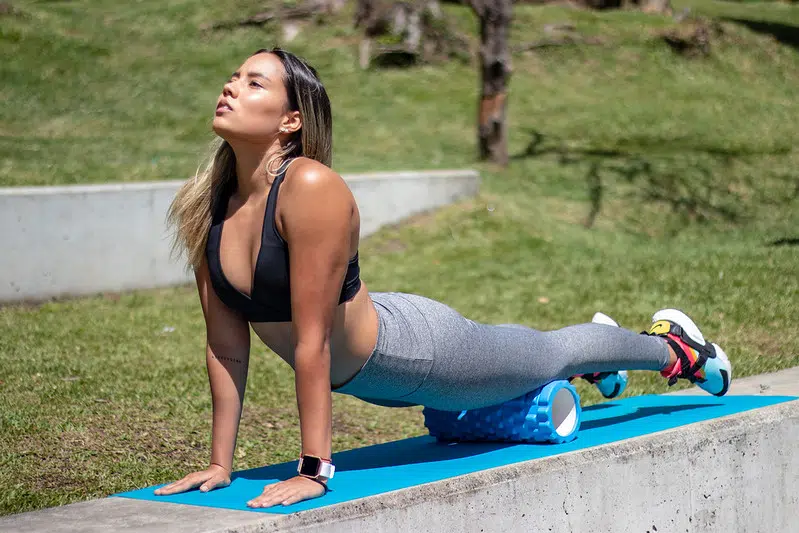
How does foam rolling work?
No one knows for sure at the moment, but there are hypotheses. One idea is that the mechanical stress provided by foam rolling causes the tissue to soften up and form a more gel-like tissue state that tends to affect the body’s fascia without impairing muscle function. There is also to be thought a neural influence attributed to foam rolling where lower intensity muscle contractions help to facilitate a specific type of inhibition of the stretch reflex. Strong pressure is also thought to be able to overwhelm the skin receptors diminishing sensation which can increase tolerance for stretch. In reality, it is probably a combination of these different factors, but more research needs to be done to know for sure.
How To Do Foam Rolling
Foam rolling can be used as part of a warm-up before exercise, a cool-down after exercise or can be used as part of a separate stretching routine. It can also be used as all three. One of the benefits of foam rolling for runners is that it can help to warm up cold muscles. A session of foam rolling can be followed with a run, but it can also be followed with a deeper stretching routine. It can maintain normal movement patterns after tissue has been mobilized since it does not inhibit muscle performance.
Rolling should only occur over top of soft tissue (muscles) and it should not occur over joints, ligaments or bony protrusions. And I hate to break it to you but the lower lateral thigh where your IT band is should typically be off-limits when foam rolling. In most cases, this is a supersensitive area that does not tend to respond well to foam rolling. It just hurts like crazy without getting you anywhere. Often rolling surrounding areas and the muscle that inserts into the ITB (tensor fasciae latae m.) is more effective. That and getting your gluteus medius muscle working right.

Each muscle has a way to minimize or maximize the amount of pressure that you apply when foam rolling. Beginners should start by using a softer white foam roll and less pressure. You can gradually increase pressure during a session as muscles loosen and in subsequent sessions as you become more used to it. Over time you will get used to the foam roller you are using and may want more firmness. Buying a firmer foam roller would be reasonable at that point. You don’t want to just jump to a Vyper 2.0 right away, even though an advanced user may need to progress to get quicker benefits from foam rolling.
Start by placing your body weight on the foam roller at an intensity that is within your pain tolerance and slowly roll up and down the muscle you are targeting. One of the biggest mistakes that I see people do when performing foam rolling is that they quickly roll back and forth on the length of the muscle. Constant movement while foam rolling may be more appropriate for those that are looking to warm up before exercise, but anyone who is trying to increase the range of motion, prevent injury or try to improve athletic recovery should try to hold tender spots for a while over knots or tight bands.
These tender spots should be held for at least 10 to 15 seconds at a time, but I usually recommend that people hold them for 30 seconds before moving on. Do not hold individual spots for more than 60 seconds at a time while holding the pressure. Take deep breaths and try to be as relaxed as possible.
While working the muscle is prudent to hit it at different angles to do the inside middle and outside of each of the muscles, especially the large muscles in the leg. It is recommended to do at least a minimum of 90 seconds per muscle to reduce muscle pain and soreness. Depending on your available time, you can hit every tender spot that you find for 30 seconds in each area, or you can just hit the worst spot in the muscle in the inner, middle and outer parts of the muscle.
Too much foam rolling can increase muscle soreness to the point where a person might feel that they can’t do the workout, which would not be of benefit. It would be difficult to do damage to the muscle using the foam roller, but it can pose an injury risk if the pain changes how muscle fires when they get activated. This could alter a person’s normal movement and predispose them to injury.
This is one of those situations where you should strive to be like Goldilocks and not do too little or too much but be just right. If you do cause bruising or soreness, do not roll again until it is cleared and then use less pressure when you resume foam rolling.
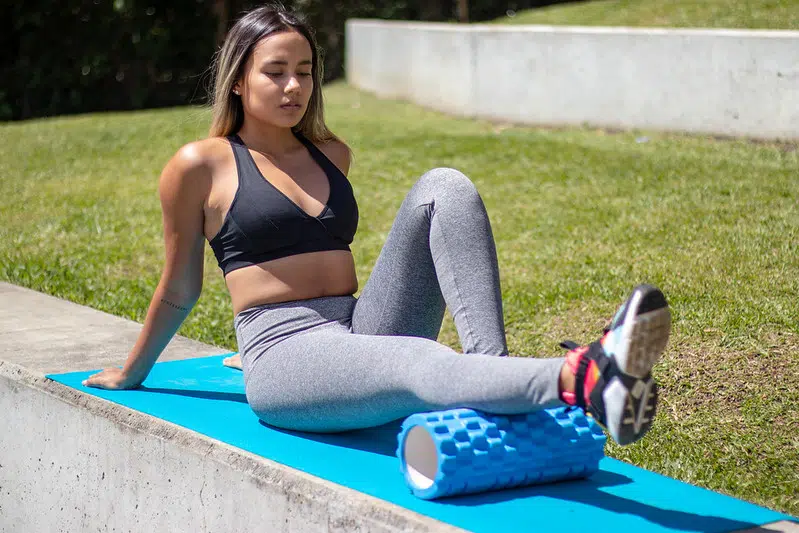
When & How Often to Foam Roll
When and how often depends on your goals of what benefits that you want out of foam rolling. As stated, you can foam roll too much and cause bruising and muscle soreness. It is possible to foam roll three times a day if you wish but that would require less time per session to not go overboard. Realize that most people do not need 3 times a day. Those recovering from an injury might need to foam roll everyday and those working on improving their flexibility should foam roll and stretch everyday for best results. Another person who is content with their flexibility might only need to foam roll 3 times a week to maintain it. Doing foam rolling for runners as a warm-up may be impractical if you are running out at a park.
Regarding the time of day, the answer is easy if you want to foam roll as part of a warm-up or a cool-down. Other than that, there is not necessarily a best time of day with one exception. Foam rolling later at night might be helpful at reducing stress, improving your sense of well being and improving your sleep. There have been connections made with deep pressure and reduction of the fight or flight response through an increase in the parasympathetic response. This is similar to how weighted gravity blankets work. You could do a modified version that is more relaxing and does not have you gritting your teeth, or one that does not involve you struggling to hold up your body weight as to not unnecessarily increase your heart rate.
Foam Rolling vs Massage Gun and Other Options
There are many other types of self-myofascial release tools including percussion massage guns, roller-massagers, Thera Canes and even the trusty old lacrosse ball. Some of these are redundant and some of them are just different tools to get to different areas. It is difficult to use a foam roller on the neck and traps, so a TheraCane is a better option there. Percussion massagers are absolutely wonderful but your ability to use them in certain areas can be limited by your range of motion. It is going to be difficult to use them on your low back but having a significant-other hit out of reach areas can feel wonderful.
Percussion massagers can be great for much of the lower extremities, but foam rollers also excel here. Force can be too much with a foam roller and holding yourself up can be difficult for many. In my opinion, roller massagers do not provide enough force on much of anything other than the quads and the person still has to provide all the force in the first place. Percussion massagers also require pushing with your arms but the mechanics of having the percussion means that you do not need to push as hard.
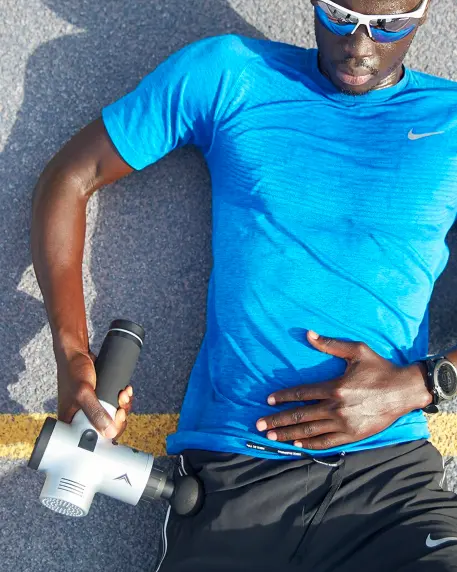

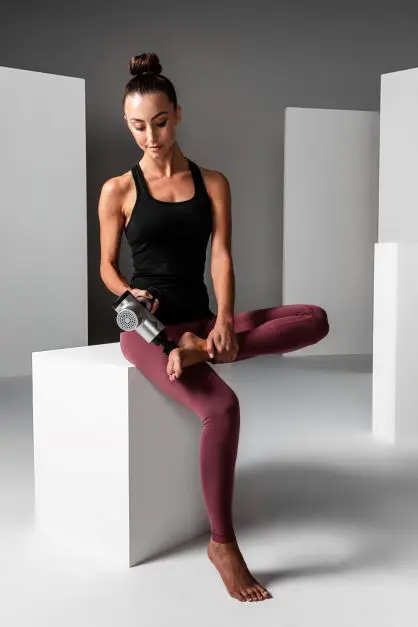
Foam rollers are much cheaper to purchase than something like a percussion massager gun. Foam rollers may need to be replaced every so often as the foam can break down, but they won’t have moving parts that can break , like in a percussion massager. There are different degrees of firmness of foam rollers where white ones are usually softer, the black ones harder and then there are options with foam padding surrounding PVC pipe and other more expensive options. One of the expensive options for foam rollers is called a Vyper 2.0, which is a vibrating foam roller, but it is amazing. Foam rolling using vibration can be a great thing for runners and athletes as it can allow you to tolerate deeper pressure to break up trigger points.
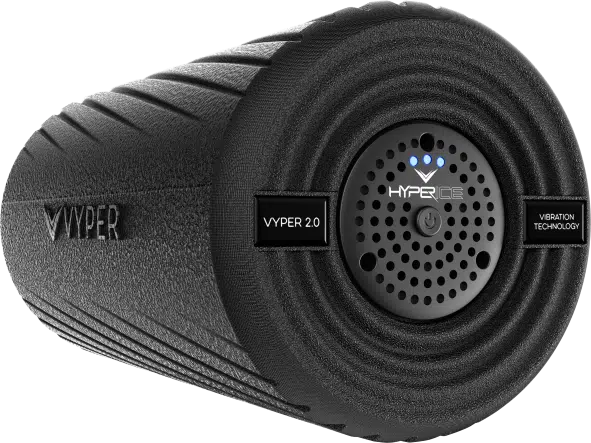
Let the good times roll!
References
